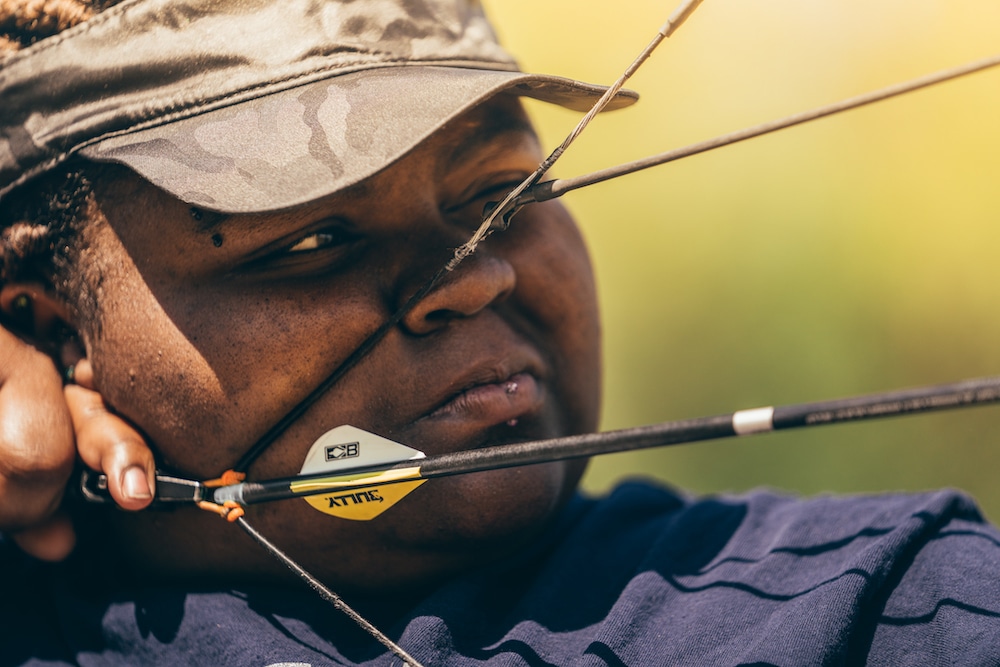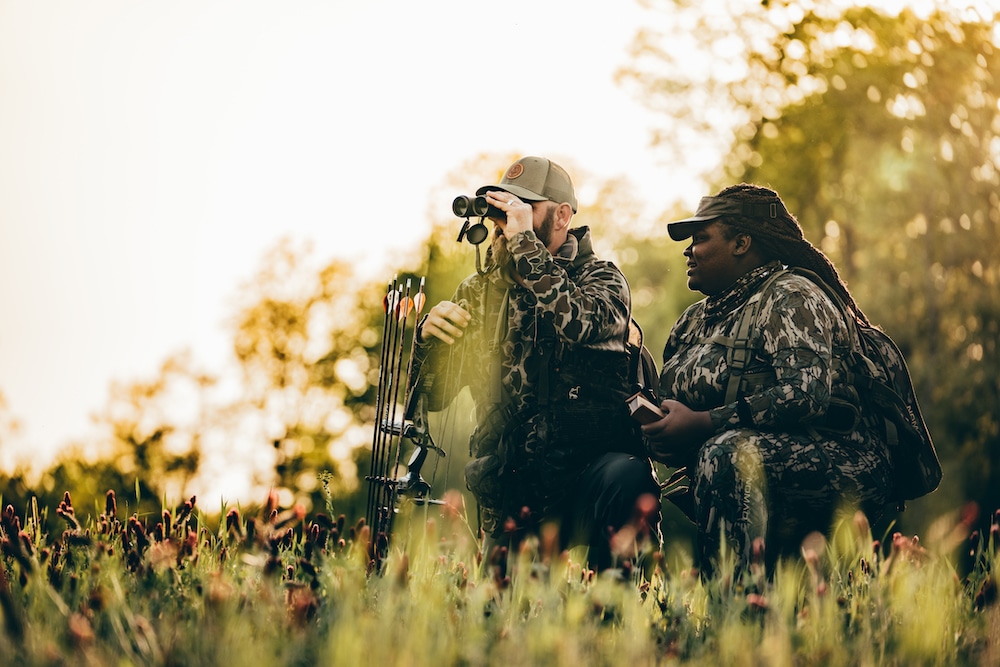Some activities come with their own terminology. It can take a little while to pick up some of the lingo when you’re new. Understanding the language can be especially difficult when words being used can mean something else in a different context.
Bowhunting has a language. Luckily, you can speak like a bowhunter in no time by learning about equipment, spending time in the field and conversing with other bowhunters. In the meantime, here’s some popular bowhunting jargon.

Bowhunters need to keep a consistent anchor point for consistent form. The string will often lay against the nose. Photo credit: Bowhunters United
Anchor Points: When bowhunters talk about their anchor points, it’s not where they dock the boat. They’re referring to the parts of their body that they consistently touch with their drawing hand. These are used as reference points to create consistency during each shot. Popular anchor points are the tip of the nose, earlobe and jawline.
Back Tension: Back tension doesn’t come from carrying heavy packs. In bowhunting, it refers to a technique that involves using the back muscles to trigger the shot. This technique often uses a specialized release rather than a trigger release.
Cam: Cams work like pulleys or wheels at the end of each bow limb. They transfer power from the limbs to the bowstring, and eventually to the arrow when it’s shot.
Draw Length: The distance the archer pulls back the string. This matters on compound bows because they have a mechanical stop that is set to the archer’s draw length.
Draw Weight: Draw weight refers to the amount of force in pounds that it takes to pull a bowstring to full draw.
Field Dressing: Field dressing, also called gutting, refers to removing the internal organs from the animal. This is an important step that prevents the meat from spoiling.

You’ll need to scope out or “glass” your game with binoculars before you hunt. Photo Credit: Bowhunters United
Glassing: Bowhunters often spend hours glassing — using binoculars or a spotting scope to search the landscape for game.
Hog: Bowhunters love shooting hogs, and not just of the swine variety. Bowhunters use the term hog to refer to a trophy-sized animal.
Kisser Button: A kisser button is a tiny piece of plastic that attaches to the bowstring. As archers draw back the bowstring, the kisser button hits the archer’s lips and serves as an anchor point for shot consistency.
Let-off: Many compound bows have a let-off, which is expressed as a percentage of the draw weight. Let-off reduces the amount of effort that the shooter must maintain at full draw. The higher the let-off, the less weight you hold at full draw.

Most states require you to have a tag for each animal you harvest that you’ll attach to the game. Photo Credit: John Hafner
License/Permit/Tag: It’s important to refer to your state’s hunting regulations to see how these are defined in your area. The terms may differ between states, and you must understand what you need to legally hunt.
Generally, you must purchase a license to legally hunt in a particular state. A valid license may allow you to hunt certain species like small game and birds.
Often, you need to obtain or purchase tags on top of your basic hunting license. For example, you may need a deer tag, an elk tag, etc. Most states require a tag for each animal that will be targeted. Hunters can only pursue animals for which they hold a tag. In many cases, tags are physical pieces of paper that are then attached to the carcass of the animal. However, many states are moving toward digital tags.
Permits may be special tags issued to a limited number of hunters who apply and are then drawn from a pool. For example, a permit could be for a species like bighorn sheep, where there are a limited number, or for a special area that only a few hunters are allowed to hunt.
Spine: In bowhunting, the spine refers to the measurement of the arrow’s bend. The spine is labeled on the arrow.
Quartering: This is a special field-dressing technique where the animal is divided into four sections. It’s also called the gutless method because hunters never open the body cavity (unless they do so to harvest edible organs). This technique is popular among backpack hunters, as it allows them to carry the meat out in packs.